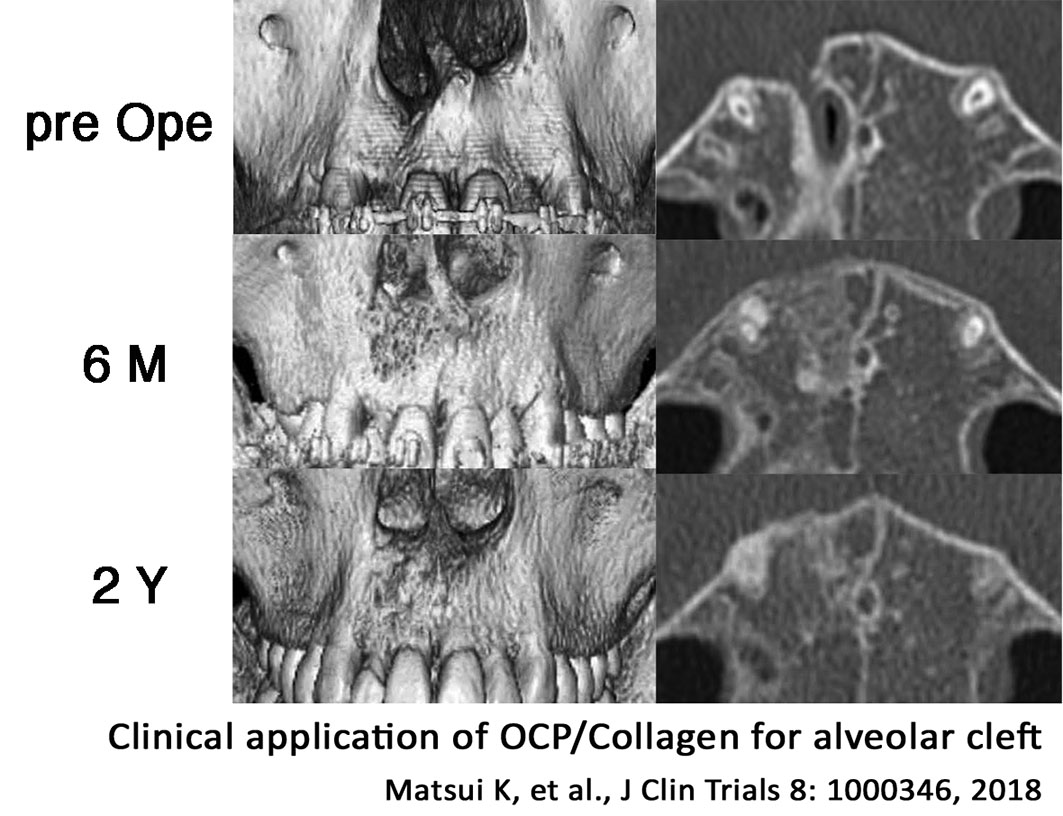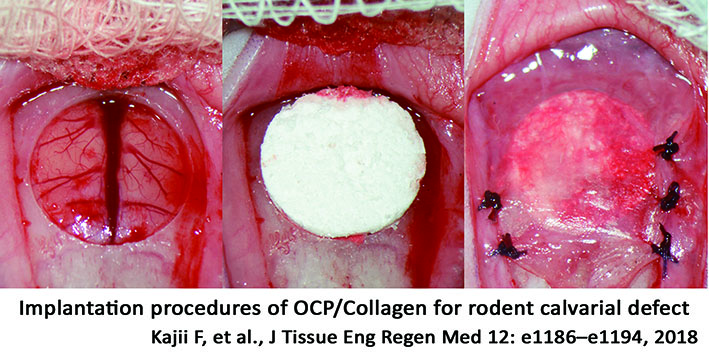Gift from sounds and lights
虎穴に入らずんば虎子を得ず
出生地は横浜ですが、父の転勤で広島や岩手に暮らしたりして、大学から仙台に来ました。1988年に東北大学の医学部を卒業して、10年ほどは普通に医師として勤務していました。1997年に加齢医学研究所に戻ってきまして、臨床もやりつつ研究を開始し、その後、2008年に医工学研究科が設立された際に発足メンバーとして加えていただき、現在に至ります。
私が研究を始めた加齢医学研究所では、電子医学部門という超音波と人工心臓の研究室に所属していました。そこで、私の師匠で1960年代に世界で初めて心臓の超音波断層法を開発した田中元直先生から、病院で使っている超音波診断装置とは違う、より新しい医療診断機器を開拓したらどうかと提案していただき、超音波顕微鏡の研究に取り組み始めました。加齢医学研究所は、もともとは抗酸菌病研究所という結核の研究所で、田中先生は心音や呼吸音の研究をしていて、超音波のことを勉強するために電気通信研究所の菊池先生の研究室に毎日通っていたそうです。受け売りになるのですが、「虎穴に入らずんば虎子を得ず」というか、良い共同研究をするためには、現場に行って、特に相手方の懐にまで踏み込んで行く必要があると、ずっと心がけています。
医工学研究科が設立された頃から、医用光工学分野の松浦先生との共同研究で、超音波と光の両方を利用した光音響顕微鏡を新たに開発しました。現在では、一番高い分解能で600〜700 nmで、細胞一個を観察することができるようになってきています。ただ、どうしても解像度と観察深度にはトレードオフの関係があります。例えば、解像度600 nmで観察すると、深度は200〜500 µmくらいになってしまいます。超音波の周波数を少し低くして解像度を落としてみると2 mmまでの深さ、解像度をもっと落としてみると2 cmくらいの深さまでは見ることができます。このように、解像度と深さとのバランスを取りながら周波数を選択して、体の中を画像化していく方法を研究しています。
Nothing ventured, nothing gained
I was born in Yokohama but lived in Kobe, Hiroshima and Iwate due to my father’s job transfer. Later I came to Sendai to enter Tohoku University. I graduated from School of Medicine at Tohoku University in 1988 and worked as a medical doctor for about 10 years. In 1997, I returned to the Institute of Development, Aging, and Cancer (IDAC) and started research while performing clinical work. Later, when the Graduate School of Biomedical Engineering was established in 2008, we were added as a founding member, and here we are today.
At the Institute of Development, Aging, and Cancer, where I began my research, I belonged to a laboratory for ultrasound and artificial hearts called the Department of Medical Engineering and Cardiology. My mentor Dr. Motonao Tanaka, who developed the world’s first ultrasound tomography of the heart in the 1960s, suggested we pioneer a novel medical diagnostic device different from the conventional ultrasound equipments used in hospitals. I then began working on ultrasound microscopes. The Institute of Development, Aging, and Cancer was initially a tuberculosis research institute called the Research Institute for Tuberculosis and Leprosy, where Dr. Tanaka was studying heart and respiratory sounds. He went to Dr. Kikuchi’s laboratory at the Research Institute of Electrical Communication every day to learn about ultrasound. I have always kept in mind that it is necessary to go into the field to conduct good collaboration, especially into the bosom of the other party.
Since the establishment of the Graduate School of Biomedical Engineering, we have developed a new photoacoustic microscope that utilizes both ultrasound and light in collaboration with Dr. Matsuura in the field of biomedical optics . At present, it is possible to observe a single cell at the highest resolution of 600 to 700 nm. However, there is inevitably a trade-off between resolution and depth of observation. For example, when observing at a resolution of 600 nm, the depth of observation is 200 to 500 µm. In the case of using lower ultrasound frequency, allowing reduce the resolution, we can observe depths of up to 2 mm. If we lower the resolution even more, we can observe depths of up to 2 cm. As mentioned, we are researching methods of imaging the inside of the body by selecting frequencies while maintaining a balance between resolution and depth.
より速く、より細かく、より深く
私は専門が循環器内科なので、細い血管の中で血液の流れる様子を超音波で見る技術の開発を行ってきました。現在取り組んでいる研究は、これまで超音波では難しいとされてきた、脳の活動を測定する新規技術の開発です。すでに確立されているfMRIなどの脳活動の測定方法と比較して、超音波の高い時間分解能を生かして、瞬時の脳活動を観察できればと考えています。時間分解能について、私の研究室では超音波の照射方法を工夫して1秒間に100枚画像が取れるようになっています。画像の解像度を少し落とせば、1秒間2000枚の撮像も可能です。そのような高時間分解能で見えてくるものは、MRIとは全く異なるものです。例えば、心臓の中の血液の流れは MRI でも見えますが、時間的にも空間的にも平均化されている、短時間で局所的な小さな渦の出現などは検出できません。また、時間分解能だけでなく、超音波では周波数を変えることで空間分解能も自由に設定することができます。高い周波数では空間分解能が上がり、低い周波数では分解能が犠牲になる代わりに、より深く、骨の向こう側までまで観察できるようになります。超音波の特性を工夫すれば脳の中の血流変化を検出できると思っていますので、頭部超音波診断の開発研究を進めていきたいと思っています。
Faster, finer, deeper
Since my specialty is cardiology, I have developed ultrasound technology to visualize blood flow in small blood vessels. The research I am currently working on is developing a new technology to measure brain activity, which has been considered difficult with ultrasound. Compared to already established methods of measuring brain activity such as fMRI, ultrasound has the advantage of the high temporal resolution to observe instantaneous brain activity. My laboratory has devised an ultrasound transmission method to obtain 100 images per second regarding temporal resolution. If the resolution of the images is slightly reduced, it is possible to take 2,000 images per second. What is seen with such high temporal resolution is entirely different from that of MRI. For example, the flow of blood in the heart can be seen in MRI, but it cannot detect, for example, the appearance of small, localized vortices over a short period, which are averaged both temporally and spatially. In addition to temporal resolution, ultrasound also allows spatial resolution to be set freely by changing the frequency. Higher frequencies increase the spatial resolution, while lower frequencies sacrifice resolution for deeper, beyond-the-bone views. I believe that we can detect changes in blood flow in the brain by devising ultrasound characteristics, and I would like to continue developing research on head ultrasound diagnosis.
「臨床と研究」から「教育と研究」へ
医工学研究科の教授に着任した際に、ある先生から、医学部や加齢医学研究所では研究を主としていたかもしれないけど、医工学研究科では教授なのだから文字通り教育を主と考えたほうが良い、とアドバイスをいただきました。それまでは臨床と研究の両立を主に考えていたのですが、教育と研究の両立を主に考えるようになりました。それで、研究科での最初の講義科目で医用装置学といって、病院で使われている CT やMRI など医療機器を解説する講義を行いました。その後、医療機器学と名前を変えて、体の中で使うカテーテルなどの小さな装置の講義も追加しました。2013年に、スタンフォード大学のバイオデザインを見学したことがきっかけとなり、医療現場での課題を学生に発見してもらうことを医療機器学の講義の中に取り入れたほうがいいと思いはじめました。最初は、全国の医療ニーズとその解決方法を募集している経済産業省(当時)のサイトから課題を見つけてきて、それを解決する方法を考えてもらっていました。でも、やはり座学だけだと限界があるということで、2015年から実際に工学研究科の学生を大学病院に見学に連れて行って、医療の現場からニーズを探って、それを解決するアイデアを考える講義をはじめました。当初、医療機器学は座学だったのですが、講義を終わった後に少し実習を追加し、その後、海外のインターンシップを更に追加して、2018年からは、それぞれ、医療機器学、医療機器開発実習、海外インターンシップと、別の科目にしました。2019年からは、医療機器ビジネス学と医療機器レギュラトリーサイエンス、医療機器開発論と講義を差別化し、実習と海外インターンシップを追加ました。初めは一つの科目だったものが、今では大きく広がりを見せてきています。
From “Clinical and Research” to “Education and Research”
When I was appointed as a professor at the Graduate School of Biomedical Engineering, one of my professors advised me below: “While you may have been primarily engaged in research at the School of Medicine or the Institute of Development, Aging, and Cancer, you should literally consider education as your main focus since you are a professor at the Graduate School of Biomedical Engineering.” Until then, I thought mainly of balancing clinical practice and research, but I began to think primarily of balancing education and research. I gave a lecture called “Medical Equipment Science” as my first lecture at the Graduate School. In the lecture, I explained medical devices used in hospitals, such as CTs and MRIs. Later, we changed the name to “Medical Device Science” and added lectures on small devices used in the body, such as catheters. In 2013, a visit to Stanford University to observe Biodesign led me to think that we should incorporate in our Medical Device Science lectures the discovery of issues in the medical field by students. At first, I had the students find problems from the (then) Ministry of Economy, Trade and Industry (METI) website, which solicited information on medical needs and solutions nationwide. However, I realized that there were limitations to classroom learning alone. So, in 2015 I began taking students from the Graduate School of Engineering to visit our university hospital to explore needs in the medical field and give lectures on ideas for solving those needs. In the beginning, medical device science was a classroom lecture. Still, after the lecture, we added a bit of practical training and international internships. From 2018, we made them separate subjects: Medical Device Studies, Medical Device Development Practice, and International Internships, respectively. Since 2019, we differentiated the lectures consisted of Medical Device Innovation Strategy, Medical Device Business Studies, Regulatory Science for Medical Device and added Medical Device Development Practice and Medical Device Innovation International Internship. What started out as one subject has now significantly expanded.
イノベーションを生み出すエコシステムを
海外での医工連携の研究体制を見せるために、オランダのエラスムス医療センターに医工学研究科の学生を連れて行ったりしているのですが、そのセンターには建物の中にマシンショップといって医療機器を実際に作ることができる設備があり1フロアを占めています。医療現場や大学の中でダイレクトに医療機器を開発していることに非常に感銘を受けまして、実際の現場を学生にも見てもらいたいと思いました。まだバーチャルな組織ですが、医工学研究科では医療機器創生開発センターを設立して、何か医療機器のアイデアが出た時にプロトタイプまでは作れるように、工学研究科の先生や電気通信研究所、金属材料研究所、流体科学研究所の先生方にもお願いして、施設設備を使わせていただく許可をとって、エラスムス医療センターの環境に近い環境を整えています。
また、先にお話したスタンフォード大バイオデザインでは、スタンフォード大学の周囲に小さな医療機器を作る会社がたくさんあって、そこに製作を外注するシステムとなっています。スタンフォード大バイオデザインで採用された課題の医療機器を外注で製作する事がビジネスとして成立しているのですね。では、東北大学で同様の環境があるかというと、そういった中小企業に匹敵する技術が東北大学の各研究室にたくさんあります。東北大学の工学系のほとんどの先生は、ウチの技術でよければどんどん使ってくださいとおっしゃってくださいます。それを使わない手はないということで、医工学研究科の先生を中心に、アイデアからプロトタイプ製作まで一気に行える環境を整備しようとしています。また、プロトタイプを海外でプロモーションしたり販売したりする戦略を学ぶために、学生をスタンフォードに連れて行ったりもしています。その他に、エラスムス医療センターに加えて、デルフト工科大学、トゥエンテ大学、ラドバウド大学の4大学に連れて行き、医療と工学の接点の現場を見てもらうと同時に、向こうの現場の医療従事者や医療機器開発者と議論することで、将来的に、国際的人材を育成する教育につなげることを考えています。
Establish ecosystems generating innovation
I have taken the Graduate School of Biomedical Engineering students to the Erasmus Medical Center in the Netherlands to show them the research system for medical-engineering collaboration overseas. The center has a machine shop in the building that occupies one floor where medical devices can be made. I was very impressed that medical devices are developed directly in the medical field and at the university, and I wanted students to see it in action. The Graduate School of Biomedical Engineering has established the Medical Device Innovation Center, although it is still a virtual organization. We have tried to create an environment to make actual prototypes when we have an idea for a medical device, similar to the Erasmus Medical Center. We have asked professors from the Graduate School of Engineering, the Research Institute of Electrical Communication, the Institute for Materials Research, and the Institute of Fluid Science to allow usage of their facilities and equipment.
Stanford Biodesign, which I mentioned earlier, has many small medical device manufacturing companies around Stanford University. The system is to outsource the manufacturing to them. So, it has become a business to subcontract the production of medical devices for the projects adopted by Stanford Biodesign. Asking how we can achieve a similar environment, we have many technologies in each laboratory at Tohoku University comparable to small and medium-sized companies. Most of the engineering professors at Tohoku University are delighted to provide their technology. We are trying to create an environment where we can go from an idea to prototyping all at once, led by the professors of the Graduate School of Biomedical Engineering. We are also taking students to Stanford to learn strategies for promoting and selling prototypes abroad. In addition to the Erasmus Medical Center, we are also taking students to the Delft University of Technology, University of Twente, and Radboud University to see the interface between medicine and engineering and discuss with medical professionals and medical device developers in the field over there. We consider that they can be educated to develop global human resources in the future.


